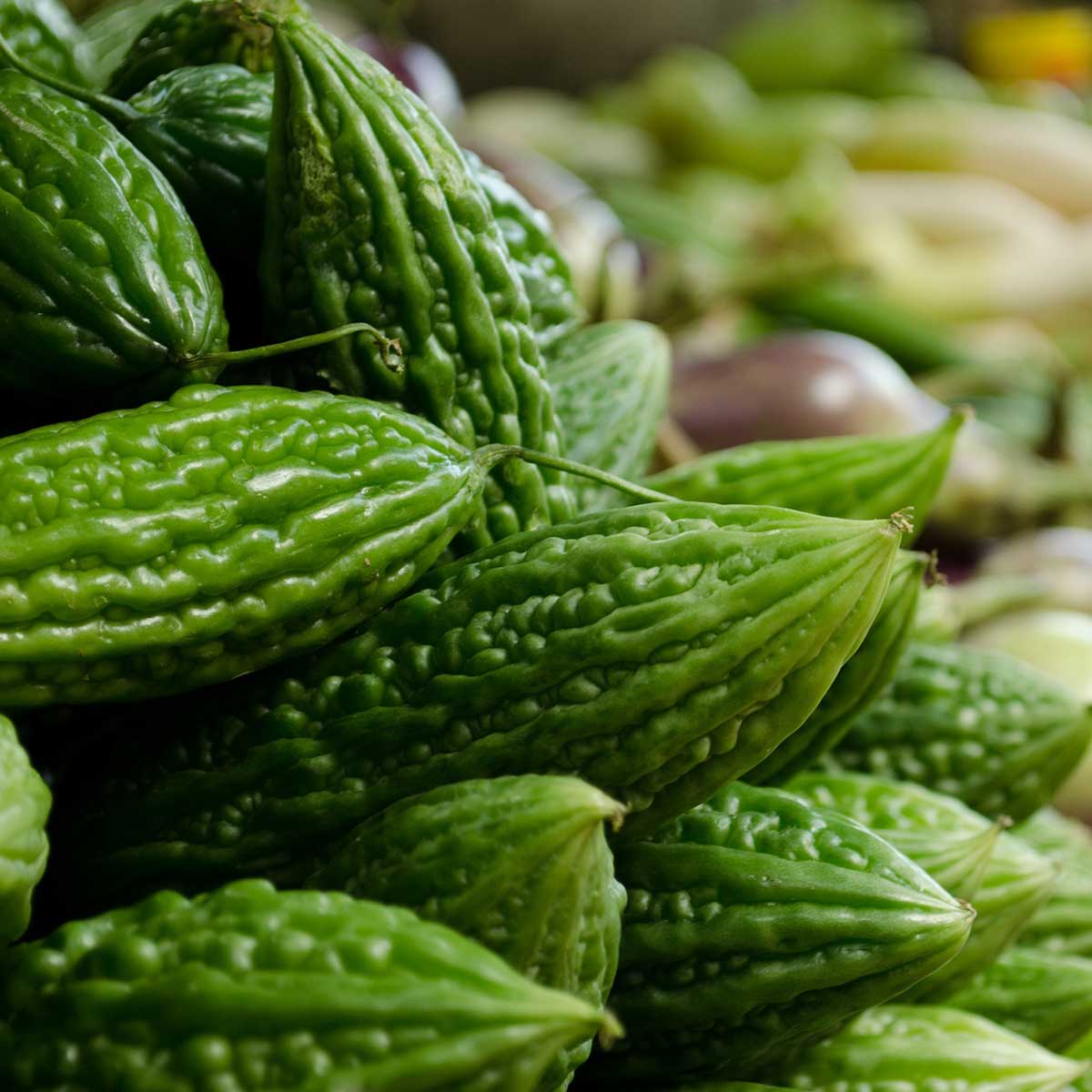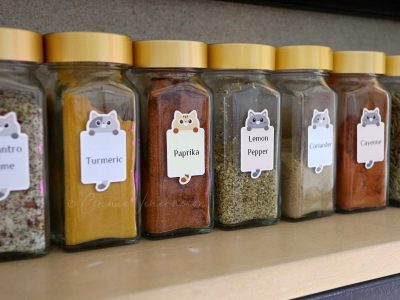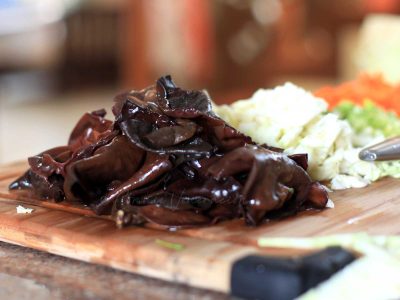But, first, did I say that bitter gourd is a fruit? Yes, it is. There are a number of fruits that we have come to think of as vegetables because we have been consuming them as vegetables either raw or cooked. Bitter gourd and tomatoes are just two of them.
So, bitter gourd is a fruit-vegetable. And, as its name so obviously states, it is bitter. It is not among my favorite vegetables but there was a time when I was obligated to eat it day after day after day. In my twenties, I suffered from severe anemia and there was a common belief that bitter gourd could somehow make my body generate blood.
My mother insisted that bitter gourd should be part of my diet. My grandmother said so too. My brother even cooked bitter gourd with pork liver. And he didn’t really cook — he could hardly fry eggs, for goodness’ sakes. But the effort he put in cooking the dish still makes me smile to this day.
Of course, eating copius amounts of bitter gourd did not cure me. Whether it’s because I didn’t eat enough of it (I was losing my appetite after a few days) or because the alleged health benefits from eating bitter gourd is just old wives’ tale, I’ll never know.
We rarely eat bitter gourd at home now. My daughters dislike more than I do but, sometimes, I cook it just to serve something different.
Bitter gourd is mormordica charantia
It is a vine that is cultivated in the tropics and subtropics, especially in Asia, the Caribbean and Africa. It looks similar to the cucumber but the skin is bumpy. The length, girth and color depend on the variety. The leaves and tendrils, less bitter than the fruit flesh, are also cooked as vegetable. The skin is edible so bitter gourd is eaten unpeeled. The rather thin flesh underneath the skin surrounds a hollow interior that contains the seeds covered by a soft white pith.
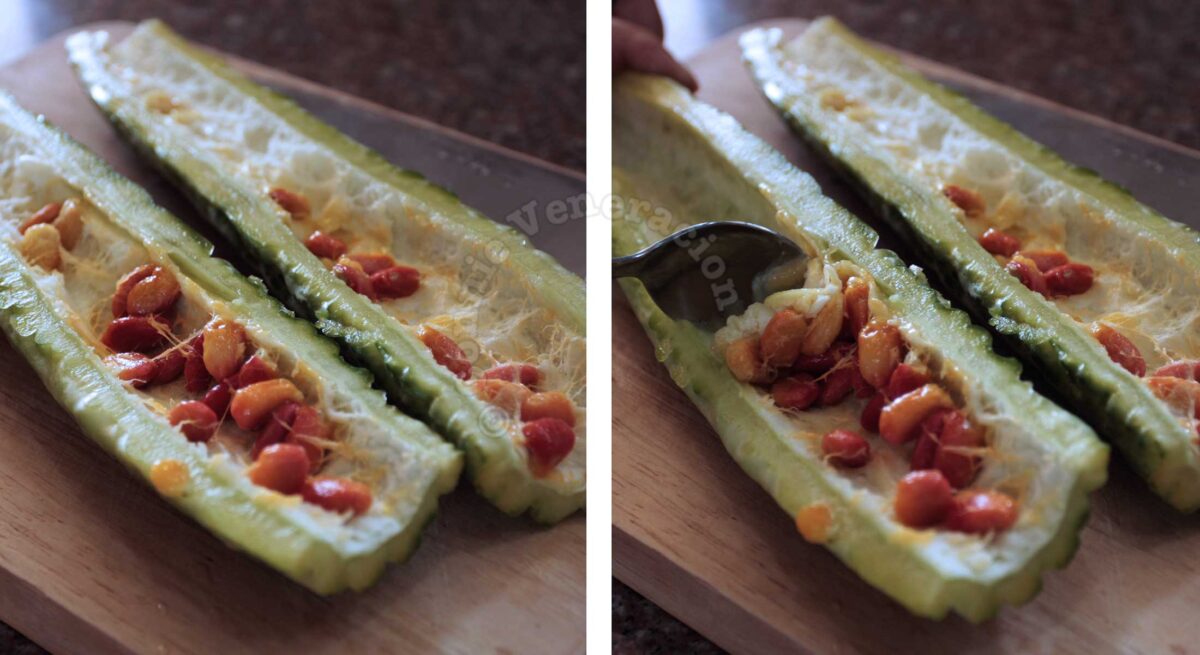
In the Philippines, it is common practice to scrape off and discard the seeds and pith. According to Wendy Kiang-Spray, author of The Chinese Kitchen Garden, as the bitter bourd matures and the white spongy pith inside turns a goopy red, it also becomes sweet and totally edible so long as you spit out the seeds. She describes the flavor as similar to roasted bell pepper.
How to lessen the bitterness of bitter gourd
Note that this process does not get rid of the bitterness a hundred per cent. It does, however, remove a substantial amount of bitterness to make the bitter gourd more palatable. If you cook it with other ingredients, the bitterness will be even less pronouced.
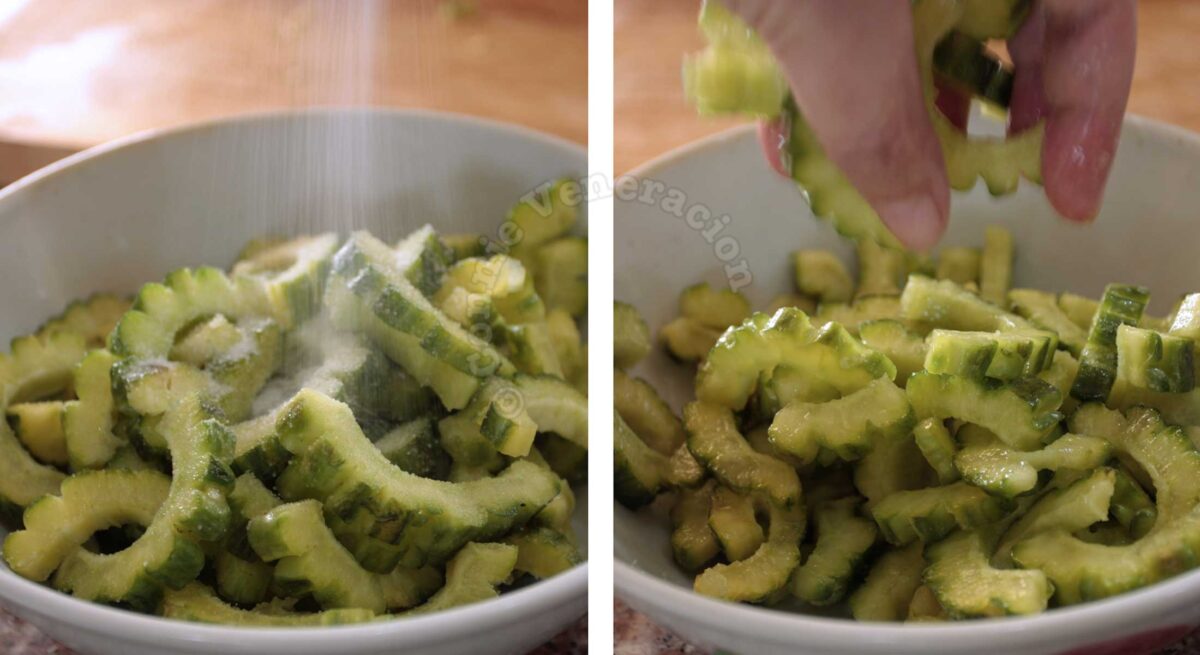
Split the bitter gourd vertically into halves, scrape off the seeds and pith in the middle, then slice the flesh. Place in a bowl and sprinkle with a generous amount of salt. Massage the salt into the flesh of the bitter gourd then leave for 30 minutes. The salt will draw out the water from the bitter gourd.
Rinse the bitter gourd slices well and drain. With your hands, squeeze out as much of the remaining water as you can without breaking the slices into pieces. Alternatively, place the drained bitter gourd slices in a cheese cloth and wring out the water.
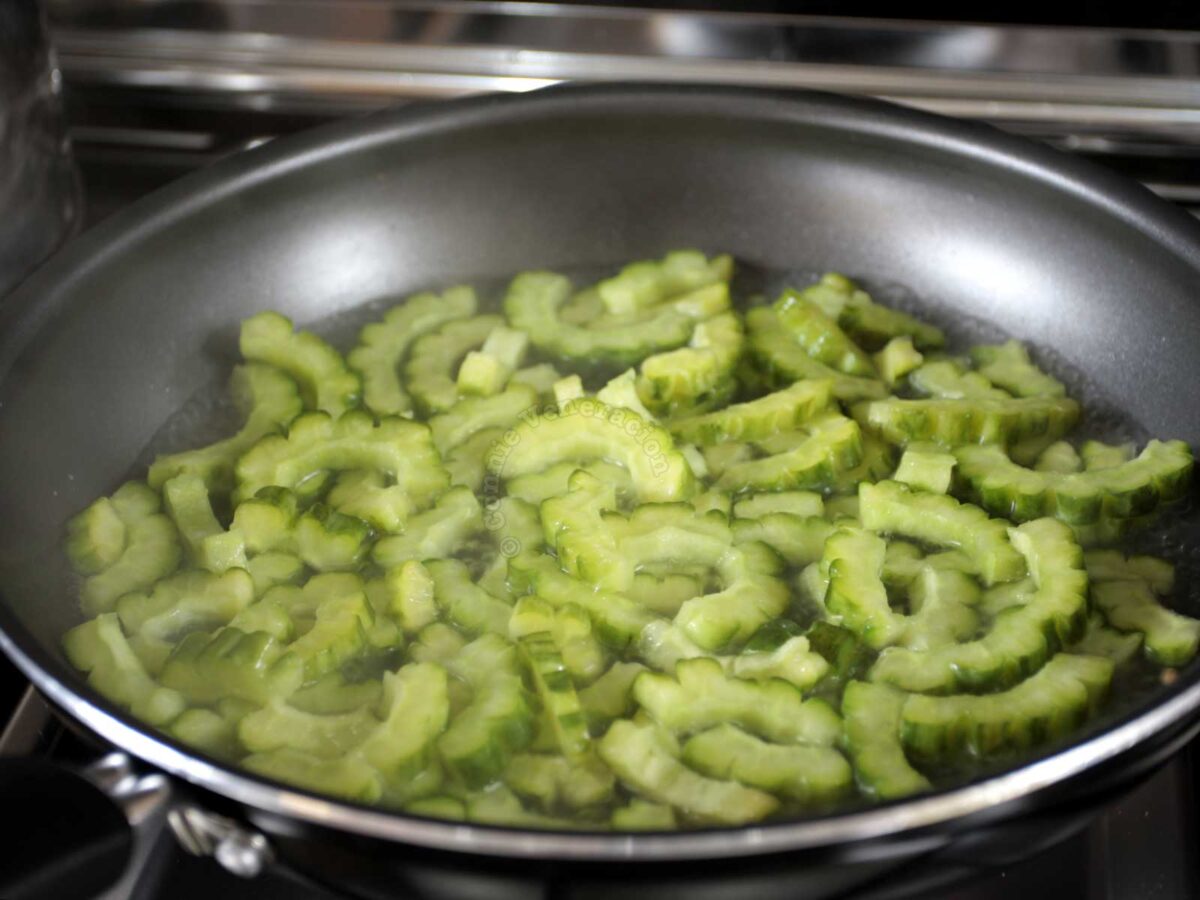
At this point, you can cook the bitter gourd. However, if you want remove most of the salt that the bitter gourd has absorbed (and more of any remaining bitterness), blanch the slices for a few minutes. How long depends on how much crunch you want left in the vegetable.

